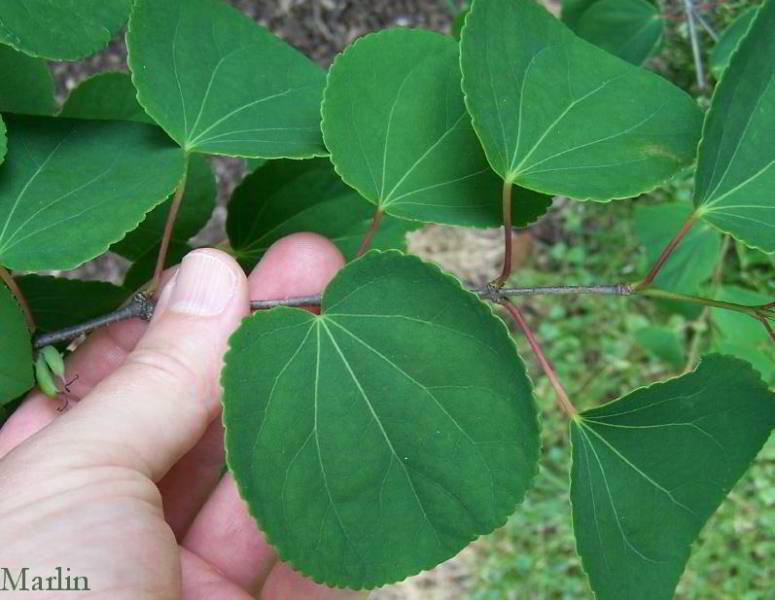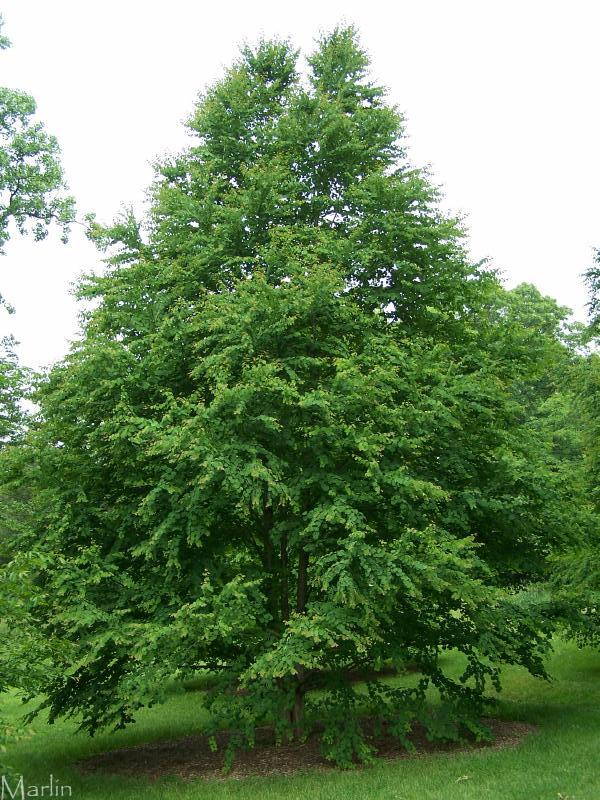Katsura Tree – Cercidiphyllum japonicum
Family Cercidiphyllaceae
Height: 40-60′ Spread: 20-30′ / Form: Pyramidal / USDA Hardiness Zones: 4-8.
Cultural Requirements: Katsura enjoys full sun in rich, moist, well-drained soil. Tolerant of humid conditions, but shallow-rooted and must be watered during dry periods. It will also benefit with a 3-4-inch layer of organic mulch.
Ornamental Characteristics: Attractive silhouette with shaggy bark and strong branching habit. In spring, its heart-shaped leaves emerge reddish-purple, changing to blue-green as they mature. In autumn, leaves change to a brilliant yellow. During the fall these leaves release a warm and spicy fragrance, reminiscent of cotton candy.
Uses in the Landscape: Best in home landscapes, parks, and golf courses.

Katsura is grown as an ornamental tree for its delicate leaves and bright autumn colour, a mix of bright yellow, pink and orange-red. Where conditions are suitable, it is fast-growing, but it is very sensitive to drought and needs deep, permanently moist soil. Under drought conditions, the species will abscise its leaves, however refoliation may occur once water is made available. The scent produced by the leaves in the autumn is said to resemble burnt brown sugar or cotton candy.

Two species of plants, both commonly called Katsura, are the sole members of the monotypic family Cercidiphyllaceae. (Don’t ask me how to pronounce it!) The genus is native to Japan and China. The type species, Cercidiphyllum japonicum, can reach 45 m in height, and is one of the largest hardwoods in Asia. The other species, Cercidiphyllum magnificum, is much smaller, rarely reaching over 10 m. Leaf size varies from 3-8 cm long and 3-5.5 cm broad.
The genus is dioecious, having separate male and female trees. The small inconspicuous flowers are produced in early spring and wind-pollinated; the fruit is a cluster of 2-4 small pods, each pod 1-2 cm long with numerous small, flattened and winged seeds. The fruits mature in autumn and release their seeds in autumn through winter. The family name Cercidiphyllum refers to the close resemblance of the leaves to those of Cercis (redbuds); these two unrelated genera can be distinguished easily as redbud leaves are alternate, not opposite [1].
Family Rosaceae – Rose Family; Fruit Trees
Trees Index | Pine Family | Beech, Oak | Nut Trees | Birch Family | Magnolias
Tree Encyclopedia / North American Insects & Spiders is dedicated to providing family-friendly educational
resources for our friends around the world through large images and macro photographs of flora and fauna.

